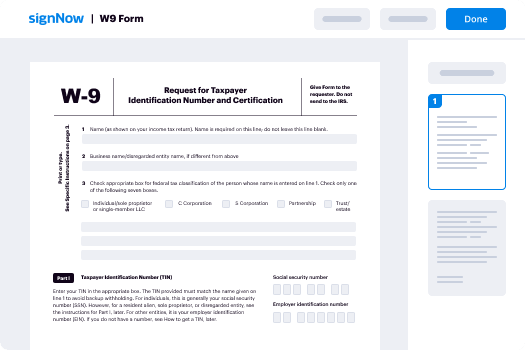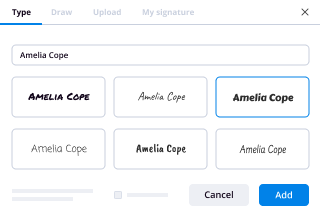- 1 -
STATE OF MINNESOTA DISTRICT COURT
COUNTY OF JUDICIAL DISTRICT
FAMILY COURT DIVISION
In Re the Marriage of: Court File No.
,
Petitioner,
GARNISHMENT
EARNINGS
AND DISCLOSURE
,
Respondent,
DEFINITIONS
"EARNINGS": For the purpose of garnishment, "earnings" means compensation paid or
payable to an employee for personal services or compensation paid or payable to the producer for
the sale of agricultural products; milk or milk products; or fruit or other horticultural products
produced when the producer is operating a family farm, a family farm corporation, or an authori zed
farm corporation, as defined in section 500.24, subdivision 2, whether denominated as wages,
salary, commission, bonus, or otherwise, and includes periodic payments pursuant to a pe nsion or
retirement. "DISPOSABLE EARNINGS": Means that part of the earnings of an individual remaining
after the deduction from those earnings of amounts required by law to be withheld. (Am ounts
required by law to be withheld do not include items such as health insurance, c haritable
contributions, or other voluntary wage deductions.) "PAYDAY": For the purpose of garnishment "payday(s)" means the date(s) upon which t he
- 2 -
employer pays earnings to the debtor in the ordinary course of business. If the debtor has no regular
payday, payday(s) means the fifteenth and the last day of each month. THE GARNISHEE MUST ANSWER THE FOLLOWING QUESTIONS:
1. Do you now owe, or within 70 days from the date the garnishment summons was served on
you, will you or do you expect to owe money to the debtor for earnings?
YES
NO
2. Does the debtor earn more than $ per week? (This amount is the federal minimum
wage per week.)
YES NO
INSTRUCTIONS FOR COMPLETING THE EARNINGS DISCLOSURE
A. If your answer to either question 1 or 2 is "No", then you must sign the affirmati on
on Page 2 and return this disclosure to the creditor's attorney (or the creditor if not
represented by an attorney) within 20 days after it was served on you, and you do
not need to answer the remaining questions.
B. If your answers to both questions 1 and 2 are "Yes", you must complete this form and the Earnings Disclosure Worksheet as follows:
For each payday that falls within 70 days from the date the garnishment summons
was served on you, YOU MUST calculate the amount of earnings to be retained by
completing Steps 3 through 11, and enter the amounts on the Earnings Disclosure
Worksheet. UPON REQUEST, THE EMPLOYER MUST PROVIDE THE
DEBTOR WITH INFORMATION AS TO HOW THE CALCULATIONS
REQUIRED BY THIS DISCLOSURE WERE MADE.
Each payday, you must retain the amount of earnings listed in Column I on the
Earnings Disclosure Worksheet.
You must retain this Earnings Disclosure Form and the Earnings Disclosure
Worksheet to the creditor's attorney (or the creditor if not represented by an attorney)
and deliver a copy to the debtor within ten days after the last payday that fal ls within
the 70-day period.
If the claim is wholly satisfied or if the debtor's employment ends before the
expiration of the 70-day period, your disclosure should be made within ten days after
the last payday for which earnings were attached.
For Steps 3 through 11, "Columns" refers to columns on the Earnings Disclosure Worksheet.
3. COLUMN A. Enter the date of debtor's payday.
- 3 -
4. COLUMN B. Enter debtor's gross earnings for each payday.
5. COLUMN C. Enter debtor's disposable earnings for each payday.
6. COLUMN D. Enter 25 percent of disposable earnings. (Multiply Column C by .25).
7. COLUMN E. Enter here 40 times the hourly federal minimum wage ($...) times the
number of work weeks included in each payday. (Note: If a period
includes days in excess of whole work weeks, the additional days
should be counted as a fraction of a work week equal to the number
of work days in excess of a whole work week divided by the number
of work days in a normal work week.)
8. COLUMN F. Subtract the amount in Column E from the amount in Column C, and ent er
here.
9. COLUMN G. Enter here the lesser of the amount in Column D and the amount i n Column
F.
10. COLUMN H. Enter here any amount claimed by you as a setoff, defense, lien, or claim, or
any amount claimed by any other person as an exemption or adverse
interest which would reduce the amount of earnings owing to the
debtor. (Note: Any indebtedness to you incurred by the debtor
within the ten days before the receipt of the first garnishment on a
debt may not be set off against amounts otherwise subject to the
garnishment. Any assignment of earnings made by the debtor to any
party within ten days before the receipt of the first garnishment on a
debt is void.) You must also describe your claim(s) and the claims of
others, if known, in the space provided below the worksheet and state
the name(s) and address(es) of these persons. Enter zero in Column
H if there are no claims by you or others which would reduce the
amount of earnings owing to the debtor.
11. COLUMN I. Subtract the amount in Column H from the amount in Column G and ente r
here. This is the amount of earnings that you must retain for the
payday for which the calculations were made.
AFFIRMATION
I, ____________________ (person signing Affirmation), am the garnishee or I am
authorized by the garnishee to complete this earnings disclosure, and have done so t ruthfully and to
the best of my knowledge.
Dated:____________
_______________________________ Signature _______________________________
Title _______________________________
Telephone Number
- 4 -
EARNINGS DISCLOSURE WORKSHEET
Debtor's Name
A B C
Payday Gross Disposable
Date Earnings Earnings
1. ________________ ________________
2.
3.
4. ________________ ________________
5.
6.
7. ________________ ________________
8.
9.
10.
D E F
25% of 40 X Min. Column C
Column C Wage Minus Column E
1. ________________ ________________
2.
3.
4. ________________ ________________
5.
6.
7. ________________ ________________
8.
9.
10.
G H I
Lesser of Setoff, Lien, Column G
Column D and Adverse Interest, Minus
Column F or Other CLaims Column H
1. ________________ ________________
- 5 -
2.
3.
4. ________________ ________________
5.
6.
7. ________________ ________________
8.
9.
10. TOTAL OF COLUMN I $
*If you entered any amount in Column H for any payday(s), you must describe below either your
claims, or the claims of others. For amounts claimed by others, you must both st ate the names and
addresses of these persons, and the nature of their claim, if known.
AFFIRMATION
I, ____________________ (person signing Affirmation), am the third party or I am
authorized by the third party to complete this earnings disclosure worksheet, and have done so
truthfully and to the best of my knowledge.
Dated:____________________
Signature:____________________
Title:____________________
Telephone Number ( )____________
- 6 -
(EARNINGS DISCLOSURE FORM AND WORKSHEET FOR CHILD SUPPORT DEBTOR)
STATE OF MINNESOTA DISTRICT COURT
COUNTY OF JUDICIAL DISTRICT
FAMILY COURT DIVISION
In Re the Marriage of: Court File No.
,
Creditor,
GARNISHMENT
EARNINGS
AND DISCLOSURE
,
Debtor,
Garnishee.
DEFINITIONS
"EARNINGS": For the purpose of execution, "earnings" means compensation paid or
payable to an employee for personal services or compensation paid or payable to the producer for
the sale of agricultural products; milk or milk products; or fruit or other horticultural products
produced when the producer is operating a family farm, a family farm corporation, or an authori zed
farm corporation, as defined in section 500.24, subdivision 2, whether denominated as wages,
salary, commission, bonus, or otherwise and includes periodic payments pursuant to a pe nsion or
retirement, workers' compensation, or unemployment compensation. "DISPOSABLE EARNINGS": Means that part of the earnings of an individual remaining
after the deduction from those earnings of amounts required by law to be withheld. (Am ounts
required by law to be withheld do not include items such as health insurance, c haritable
- 7 -
contributions, or other voluntary wage deductions.)"PAYDAY": For the purpose of execution, "payday(s)" means the date(s) upon which the
employer pays earnings to the debtor in the ordinary course of business. If the judgment debt or has
no regular payday, payday(s) means the fifteenth and the last day of the each month. THE GARNISHEE MUST ANSWER THE FOLLOWING QUESTIONS:
1. Do you now owe, or within 70 days from the date the execution levy was served on you, will you or may you owe money to the debtor for earnings?
YES
NO
INSTRUCTIONS FOR COMPLETING THE EARNINGS DISCLOSURE
A. If your answer to question 1 is "No", then you must sign the affirmation below and return this disclosure to the creditor's attorney (or the creditor if not represented by
an attorney) within 20 days after it was served on you, and you do not need to
answer the remaining questions.
B. If your answer to questions 1 is "Yes", you must complete this form and the Earnings Disclosure Worksheet as follows:
For each payday that falls within 70 days from the date the garnishment summons
was served on you, YOU MUST calculate the amount of earnings to be retained by
completing Steps 2 through 8 on page 2, and enter the amounts on the Earnings
Disclosure Worksheet. UPON REQUEST, THE EMPLOYER MUST PROVIDE
THE DEBTOR WITH INFORMATION AS TO HOW THE CALCULATIONS
REQUIRED BY THIS DISCLOSURE WERE MADE.
Each payday, you must retain the amount of earnings listed in Column G on the
Earnings Disclosure Worksheet.
You must pay the attached earnings and return this Earnings Disclosure Form and
the Earnings Disclosure Worksheet to the creditor's attorney (or the creditor i f not
represented by an attorney) and deliver a copy to the debtor within ten days after the
last payday that falls within the 70-day period. If the claim is wholly sati sfied or if
the debtor's employment ends before the expiration of the 70-day period, your
disclosure should be made within ten days after the last payday for which earnings
were attached.
For Steps 2 through 8, "Columns" refers to columns on the Earnings Disclosure Worksheet.
2. COLUMN A. Enter the date of debtor's payday.
3. COLUMN B. Enter debtor's gross earnings for each payday.
- 8 -
4. COLUMN C. Enter debtor's disposable earnings for each payday.
5. COLUMN D. Enter either 50, 55, 60 or 65 percent of disposable earnings, based on which of the following descriptions fits the child support judgment debtor:A) 50 percent of the judgment debtor's disposable income, if the judgment debtor is supporting a spouse or
dependent child and the judgment is 12 weeks old or
less (12 weeks to be calculated to the beginning of the
work week in which the execution levy is received);
B) 55 percent of the judgment debtor's disposable income, if
the judgment debtor is supporting a spouse or
dependent child, and the judgment is over 12 weeks
old (12 weeks to be calculated to the beginning of the
work week in which the execution levy is received);
C) 60 percent of the judgment debtor's disposable income, if
the judgment debtor is not supporting a spouse or
dependent child and the judgment is 12 weeks old or
less (12 weeks to be calculated to the beginning of the
work week in which the execution levy is received); or
D) 65 percent of the judgment debtor's disposable income, if the judgment is not supporting a spouse or dependent
child, and the judgment is over 12 weeks old (12
weeks to be calculated to the beginning of the work
week in which the execution levy is received).
(Multiply Column C by .50, .55, .60, or .65, as
appropriate.)
6. COLUMN E. Enter here any amount claimed by you as a setoff, defense, lien, or claim, or
any amount claimed by any other person as an exemption or adverse
interest that would reduce the amount of earnings owing to the
debtor. (NOTE: Any assignment of earnings made by the debtor to
any party within ten days before the receipt of the first garnishment
on a debt is void. Any indebtedness to you incurred by the debtor
within the ten days before the receipt of the first garnishment on a
debt may not be set off against amount otherwise subject to the
garnishment.)
You must also describe your claim(s) and the claims of others, if
known, in the space provided below the worksheet and state the
name(s) and address(es) of these persons.
Enter zero in Column E if there are no claims by you or others that
would reduce the amount of earnings owing to the judgment debtor.
7. COLUMN F. Subtract the amount in Column E from the amount in Column D and ent er
here. This is the amount of earnings that you must remit for the
payday for which the calculations were made.
- 9 -
AFFIRMATION
I, ____________________ (person signing Affirmation), am the garnishee or I am
authorized by the garnishee to complete this earnings disclosure, and have done so t ruthfully and to
the best of my knowledge.
Dated: ____________ _______________________________
Signature _______________________________
Title _______________________________
Telephone Number
- 10 -
EARNINGS DISCLOSURE WORKSHEETDebtor's Name
A B C
Payday Gross Disposable
Date Earnings Earnings
1. ________________ ________________
2.
3.
4. ________________ ________________
5.
6.
7. ________________ ________________
8.
9.
10.
D E F
Either 50, 55 Setoff, Lien Column D
60, or 65% of Adverse Interest, Minus
Column C or Other Claims Column E
1. ________________ ________________
2.
3.
4. ________________ ________________
5.
6.
7. ________________ ________________
8.
9.
10. TOTAL OF COLUMN F $
*If you entered any amount in Column E for any payday(s), you must describe below either your
claims, or the claims of others. For amounts claimed by others, you must both st ate the names and
addresses of such persons, and the nature of their claim, if known.
- 11 -
AFFIRMATION
I, ________________ (person signing Affirmation), am the third party or I am authorized
by the third party to complete this earnings disclosure worksheet, and have done so t ruthfully and to
the best of my knowledge.
Dated:________________
Signature:________________
Title:________________
Telephone Number ( )___________
















